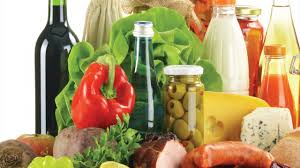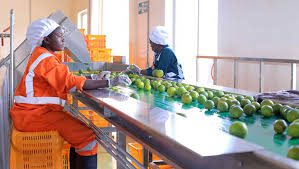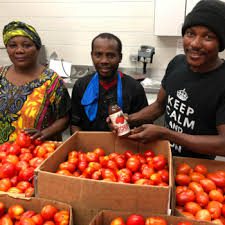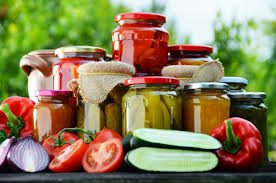Agro-value addition refers to the process of enhancing the economic value of agricultural products by transforming them into forms that are more convenient, marketable, or usable. This can include processing, packaging, branding, and other methods that improve the product’s appeal and extend its shelf life.
Value addition is crucial in agriculture as it helps farmers and producers increase their profits by creating products that meet consumer needs and preferences.
Importance of Value Addition in Agriculture
1. Increased Profitability: By adding value to raw agricultural products, farmers can sell them at higher prices, improving their income.
2. Enhanced Product Appeal: Value-added products are often more appealing to consumers due to improved packaging, taste, convenience, or branding.
3. Market Diversification: Value addition allows producers to explore new markets and reach different consumer segments, increasing their customer base.
4. Reduced Post-Harvest Losses: Processing products into more durable forms reduces spoilage and waste, helping farmers make the most of their yields.
5. Rural Development: Value addition can create employment opportunities in rural areas by promoting local processing industries and encouraging agricultural entrepreneurship.
Types of Agro-Value Addition Techniques

1. Processing: Converting raw products into processed goods, such as turning milk into cheese or tomatoes into ketchup, adds convenience and extends shelf life.
2. Packaging: Attractive and protective packaging not only enhances the product’s appearance but also improves storage, transportation, and handling.
3. Preservation: Techniques like drying, canning, and freezing help extend the shelf life of products, making them available to consumers for longer periods.
4. Branding and Labeling: Establishing a recognizable brand and providing detailed labeling can differentiate products in the market, increasing consumer trust and loyalty.
5. Product Innovation: Creating new products, such as organic snacks or specialty drinks, caters to consumer trends and adds diversity to the agricultural product range.
Benefits of Value Addition for Farmers and Producers
1. Higher Market Value: Value-added products often command higher prices than raw products, allowing farmers to earn more revenue.
2. Improved Market Access: By transforming products into forms that are more desirable, producers can reach local, regional, and even international markets.
3. Better Price Stability: Value-added products can have longer shelf lives, enabling farmers to sell their products when market prices are more favorable.
4. Job Creation: Establishing processing facilities or packaging operations provides employment opportunities, especially in rural communities.
5. Sustainable Agriculture: Value addition can support sustainability by reducing waste and encouraging efficient use of resources, aligning with environmentally-friendly practices.
Read Also: Introduction to Fisheries Ecology
Challenges in Agro-Value Addition

1. High Initial Investment: Setting up facilities for processing, packaging, or branding can be costly, and many small-scale farmers may struggle to afford these expenses.
2. Limited Access to Technology: Advanced machinery and equipment for value addition may be inaccessible to small farmers due to cost or lack of technical knowledge.
3. Regulatory Barriers: Compliance with food safety, labeling, and export regulations can be complex, especially for small-scale producers.
4. Market Competition: Competing with established brands and meeting consumer expectations can be challenging for new entrants in the value-added product market.
5. Supply Chain Issues: Lack of infrastructure and efficient distribution channels can make it difficult to get value-added products to market on time.
Role of Technology in Agro-Value Addition
Technology plays a pivotal role in enhancing agro-value addition by improving efficiency, quality, and marketability. Advanced tools and machinery enable faster and more precise processing, which reduces waste and increases the consistency of products.
1. Automation: Automated equipment speeds up processing tasks like sorting, cleaning, and packaging, enabling large-scale production.
2. Digital Monitoring Systems: Technology like IoT devices and sensors help monitor storage conditions, ensuring products remain fresh and safe throughout the processing cycle.
3. Biotechnology: Innovations such as genetically modified crops and enzyme-based treatments can enhance product quality and shelf life.
4. Mobile Applications: Apps provide real-time market information, supply chain management, and product traceability, helping farmers reach a wider audience.
5. Blockchain Technology: Blockchain ensures product transparency, allowing consumers to trace products from farm to table, enhancing trust in value-added goods.
Processing Techniques for Value Addition
Processing involves transforming raw agricultural products into more marketable forms. Different techniques help preserve, improve taste, or add convenience to these products.
1. Canning and Bottling: These methods involve sealing products in containers, such as jars or bottles, to prevent spoilage and extend shelf life.
2. Drying: By removing moisture, drying reduces the weight and volume of products, making them easier to transport and store. Common methods include sun-drying, freeze-drying, and dehydration.
3. Freezing: Freezing preserves products by maintaining low temperatures that inhibit microbial growth, often used for fruits, vegetables, and dairy products.
4. Fermentation: This process uses beneficial microorganisms to alter the flavor and texture of products, as seen in yogurt, pickles, and sauerkraut.
5. Juicing and Extracting: These techniques transform fruits and vegetables into juice, concentrates, or oils, creating new product options for consumers.
Packaging Innovations in Agro-Value Addition
Packaging not only protects agricultural products but also attracts customers by enhancing visual appeal. Innovative packaging solutions improve sustainability, storage, and convenience.
1. Biodegradable Packaging: Made from renewable resources, biodegradable packaging reduces environmental impact by breaking down naturally.
2. Modified Atmosphere Packaging (MAP): This technology adjusts the gas composition inside the packaging, extending the shelf life of perishable products like fruits and vegetables.
3. Vacuum Sealing: By removing air, vacuum sealing preserves freshness and prevents oxidation, which is useful for nuts, grains, and coffee.
4. Smart Packaging: Sensors embedded in packaging can monitor freshness, indicating when a product is about to expire.
5. Reusable and Refillable Packaging: Sustainable options like glass jars and tin containers encourage consumers to reduce waste by reusing packaging materials.
Marketing Strategies for Value-Added Agricultural Products
Effective marketing strategies ensure value-added products reach the right audience. By highlighting the benefits of these products, producers can attract consumers looking for quality and convenience.
1. Branding: A strong brand identity helps products stand out in the market and build customer loyalty through consistent quality and unique packaging.
2. Social Media Marketing: Platforms like Instagram and Facebook allow producers to showcase their products, engage with customers, and increase their reach.
3. Product Differentiation: Emphasizing unique qualities such as organic certification, local sourcing, or eco-friendly packaging helps capture niche markets.
4. Participating in Farmers’ Markets: Direct-to-consumer sales at farmers’ markets enable producers to connect with customers and gather feedback on their products.
5. E-commerce Platforms: Online stores provide a broader market reach, allowing producers to sell their products beyond local boundaries and cater to a global audience.
Value Addition in Crop-Based Products
Adding value to crop-based products helps increase their marketability and provides farmers with additional revenue streams.
1. Producing Flour and Grains: Transforming crops like wheat, maize, and rice into flour and ready-to-eat grains makes them more convenient for consumers and adds variety to product offerings.
2. Creating Snacks and Baked Goods: Crops such as corn and potatoes can be used to produce snacks like chips or baked goods, catering to the growing demand for convenience foods.
3. Making Jams and Jellies: Fruits like berries, apples, and peaches can be processed into jams, jellies, and preserves, which have a longer shelf life and appeal to a wide range of customers.
4. Extracting Oils: Crops such as soybeans, olives, and coconuts can be pressed to extract oils, which are widely used for cooking, cosmetics, and industrial applications.
5. Brewing Beverages: Grains and fruits are commonly used to produce alcoholic and non-alcoholic beverages, adding value by creating diverse products like beer, wine, and fruit juices.
Value Addition in Livestock-Based Products
Value addition in livestock-based products involves processing raw animal products into more marketable forms, enhancing their economic value and shelf life.
1. Meat Processing: Converting raw meat into products like sausages, jerky, and cured meats increases shelf life and makes it more convenient for consumers.
2. Dairy Product Transformation: Milk can be processed into cheese, yogurt, and butter, which diversifies product offerings and meets different consumer needs.
3. Egg-Based Products: Eggs are used to produce items like powdered egg, mayonnaise, and ready-to-eat meals, which provide convenience and extended storage options.
4. Leather and Wool Production: Hides and wool can be turned into leather goods and textiles, adding value to the livestock sector beyond food production.
5. Animal By-products: Bones, fats, and offal are processed into products like bone meal, tallow, and animal feed, reducing waste and generating additional income.
Read Also: The External Anatomy of Cartilaginous Fish
Agro-Value Addition and Food Security

Agro-value addition contributes to food security by enhancing the availability, quality, and affordability of nutritious foods.
1. Reduced Post-Harvest Losses: Processing raw products into longer-lasting forms reduces spoilage, making food available for longer periods.
2. Increased Nutritional Value: Value-added products can be fortified with essential nutrients, addressing malnutrition and dietary deficiencies.
3. Improved Accessibility: By creating convenient, ready-to-eat products, value addition helps make nutritious food more accessible to busy consumers and urban populations.
4. Job Creation: Agro-value addition generates employment opportunities, boosting rural economies and enhancing food security through stable incomes.
5. Enhanced Food Variety: Processing diverse agricultural products expands consumer choices, supporting balanced diets and meeting various dietary needs.
Case Studies on Successful Agro-Value Addition Enterprises
Examples of successful agro-value addition businesses demonstrate how farmers and entrepreneurs can thrive by adding value to agricultural products.
1. Green Pastures Dairy (Kenya): This dairy cooperative produces cheese, yogurt, and other milk-based products, providing stable incomes for local farmers and high-quality dairy to the community.
2. Timbaktu Collective (India): This collective focuses on organic farming and value addition, creating products like organic grains, oils, and natural skincare items, promoting sustainability and fair trade.
3. Just Baked Fish (Philippines): This company processes locally caught fish into ready-to-eat meals, extending shelf life, reducing waste, and providing consumers with a convenient protein source.
4. Mara Coffee (Ethiopia): Mara Coffee transforms locally sourced coffee beans into high-quality roasted and packaged coffee, expanding market reach and supporting local coffee growers.
5. Olam Spices (USA): This company partners with farmers to process spices like paprika and turmeric, ensuring consistent quality, expanding global reach, and supporting small-scale spice farmers.
Government Policies and Support for Agro-Value Addition
Governments play a crucial role in promoting agro-value addition by creating supportive policies and programs.
1. Subsidies and Grants: Many governments provide subsidies and grants to farmers and processors to help cover the costs of processing equipment and infrastructure.
2. Training and Extension Services: Programs offering technical training on processing, packaging, and marketing enable farmers to improve their value-added products.
3. Tax Incentives: Tax relief and exemptions encourage investment in agro-processing facilities, making value addition more affordable for entrepreneurs.
4. Market Access Programs: Initiatives that link small producers to domestic and international markets help farmers reach new customers for their value-added products.
5. Quality Standards and Certification: Governments establish standards and certification programs to ensure product safety and quality, boosting consumer confidence in value-added products.
Do you have any questions, suggestions, or contributions? If so, please feel free to use the comment box below to share your thoughts. We also encourage you to kindly share this information with others who might benefit from it. Since we can’t reach everyone at once, we truly appreciate your help in spreading the word. Thank you so much for your support and for sharing!
Read Also: Impact of Agricultural Wastes on Human and Environment
Frequently Asked Questions
We will update this section soon.

